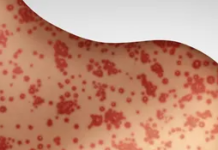Be careful where you park your car this summer because it could cost you.
Last year state officials sought public input on a tree species that is causing harm to Kansas’ ecosystem. The trees are from the pear tree family and include Bradford, Cleveland Select, Chanticleer and other pear trees.
Callery pear trees, sometimes known as Bradford pears, are known for their strong, invasive roots that can damage sidewalks and plumbing. The trees can have branches snap off during severe weather which can cause property damage.
The sap that falls from the trees can cause paint jobs on vehicles to deteriorate. Tim Hicks of Tim’s Paint Works Collision Services of Topeka said he’s seen cars come into his shop with evidence of sap damage to paint.
It will penetrate the clear coat,” Hicks said. “You would have to strip and reprime and refinish the hood. It would penetrate the clear coat and the base coat. You’d have to sand it down primer it and then refinish it.”
When sap bonds to a vehicle surface, it shrinks over time . As the sap shrinks it creates stress on the car’s finish. Additionally, tree sap is acidic and can feed on surfaces like clear coats if neglected. The longer sap is left on a vehicle the harder it becomes to remove, according to autodetailingpro.ca .
Depending on how much sap has been left on your vehicle, the cost to repaint your vehicle could be as high as $5,000. Hicks said when the sap falls onto a car and is left unattended it will etch down into the clear coat.
“I say two to three months for it to do any damages,” Hicks said. “I’ve seen it on a quarter panel of a car from last year.”
Hicks said each car panel the sap falls on could cost $600 to $800 to repair.
“You’d notice it on the windshield before you noticed it on your car,” Hicks said. “If you hit your windshield wipers it would smear and you would have to wash it off.”
Kansas Department of Agriculture (KDA) spokeswoman Heather Lansdowne said the invasiveness has prompted the KDA to restrict their spread in Kansas. Public input was received in 2023 to quarantine the trees due to their invasive qualities. Quarantine of plants is allowed under the provisions of K.S. A. 2-2117.




